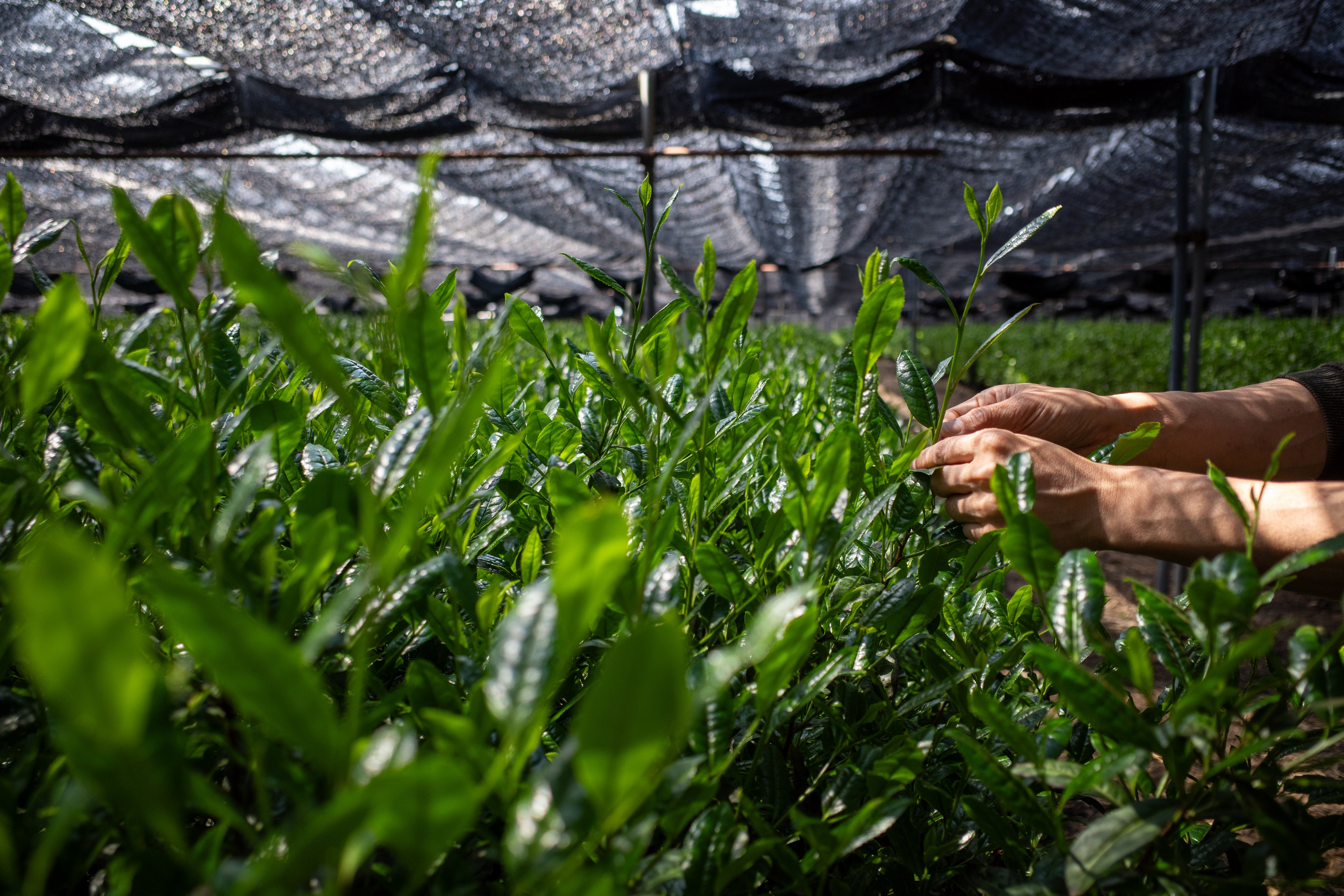Written by a mindfulness tea teacher, Miki Sensei.
In the last article, we explored matcha as a type of tea.
Now, let's examine its cultural and historical journey.
Origins and the Nara & Heian Periods (710–1192)
Although matcha is often thought of as something uniquely Japanese, its origins—like Buddhism and the Japanese writing system, kanji— lie in China. Records remain of kentoshi (Japanese missions to Tang China) and monks returning from their studies abroad, bringing back tea and offering it to the emperor.

At that time, tea took the form of mochi-cha (compressed tea cakes made from steamed leaves) that were boiled before drinking. It was a rare luxury, enjoyed only by nobles and monks.
Kamakura & Nanbokucho Periods (1192–1392)
The Zen monk Eisai of the Rinzai school studied Zen Buddhism and tea culture in Song China. Upon his return, he wrote the Kissa Yojoki ("Record of Drinking Tea for Health"), extolling tea's benefits. Records show he even presented tea to the military ruler, Shogun Minamoto no Sanetomo.
The tea introduced from the Song dynasty was tencha: steamed and ground leaves dissolved in hot water using a chasen (bamboo whisk); this was the prototype of matcha as we know it today.
The monk Myoe of Kozan-ji, who received tea seeds from Eisai, planted them in Toganoo, Kyoto, creating Japan's oldest tea garden. Tea grown there was called honcha ("true tea") and was distinguished from teas grown in other regions. From Zen temples, tea cultivation spread nationwide, eventually reaching the warrior class. In the Nanbokucho era, tea-tasting competitions known as tocha became a popular game.

🍃 Why Zen temples?
Because amidst the harshness of nature, the act of cultivating, processing, whisking, and drinking tea was itself considered a form of ascetic training and was seen as an aid in cutting through worldly desires.
🍃 The Ten Virtues of Tea
Myoe is said to have inscribed ten benefits of tea on his kettle. The benefits include divine protection, health, gratitude, release from desires, well-being, spiritual awakening, longevity, purification of the heart, blessings from the gods and Buddhas, and serenity at the end of life.
Muromachi to Azuchi–Momoyama Periods (1336–1603)
Tea culture flourished under the patronage of shogun Ashikaga Yoshimitsu and later Toyotomi Hideyoshi, who elevated Uji-cha into a prized brand. Shade cultivation began in Uji, resulting in the production of high-quality tencha.
Zen temple tea practice also influenced merchants. From this milieu, the Zen priest Murata Juko gave rise to wabicha: the tea of rustic simplicity. A well-known merchant, Takeno Joo, and a Zen monk, Sen no Rikyu, further refined the practice, completing the art of chanoyu (the Way of Tea), which spread among merchants and warriors alike.
Edo Period (1603–1868)
Chanoyu became integrated into shogunate rituals and firmly rooted in samurai society. Meanwhile, among ordinary people, steeped tea spread in popularity. In 1738, tea farmer Nagatani Sōen developed the Uji method, producing brilliant green, fragrant sencha.
(This means that in Rikyu's time, matcha was not yet the vivid green we see today, but duller in color and rougher in texture!)
Modern Era to Today
After the Meiji era, the male-dominated practice of chanoyu was introduced into school education as part of women's refinement. At its peak, over 5 million people practiced tea in Japan, but today that number has fallen below 2 million.
With this decline came a reduction in matcha production. Yet in recent years, demand has surged again—thanks to sweets, lattes, and especially international interest. Production has risen, with Kagoshima now surpassing Kyoto as the leading tencha producer, followed by Shizuoka and Aichi.

At the same time, labor shortages and the demanding nature of production mean that even within Japan, matcha is now so precious that purchases are sometimes restricted.
So, what is matcha really?
Perhaps its greatest essence is that you consume the tea leaf whole. In that simple fact lies the concentrated wisdom and ingenuity of generations.
To drink tea wholly is to take in nature's harshness and tenderness, its impermanence and eternity. To receive the life of tea into your body is to connect and become one with all things.
In its color lies the green of the earth. In its fragrance, texture, and taste, are the connections, the centuries of wisdom, and the gift of nature becoming part of you, living within you.
I am reminded of the words of the late Urasenke Grand Master, who passed away last month at the age of 102:
一盌からピースフルネスを。
Peacefulness through a bowl of tea.
Written by:
 |
Miki Fujisaki hibana to bloom founder, mindfulness tea facilitator/coach Website: https://www.hibana-to-bloom.com/ Instagram: @hibanatobloom |
Miki was born in Osaka and began her journey in Urasenke Chado while working as a Japan Airlines cabin attendant. During her time in London, she planned and managed Japanese cafes ("Matcha" and "Cha no Ma"), and after her return to Japan, she oversaw international project planning.
To deepen her understanding of spaces and relationships where individuals coexist, illuminate, and nurture, Miki studied coaching and facilitation. Currently, she holds tea gatherings and coaching sessions for individuals and companies in tea rooms, offices, online, and overseas. Her work is centered around the theme of interbeing, cultivating a sense of interconnectedness, mindfulness, and "here-and-now."

